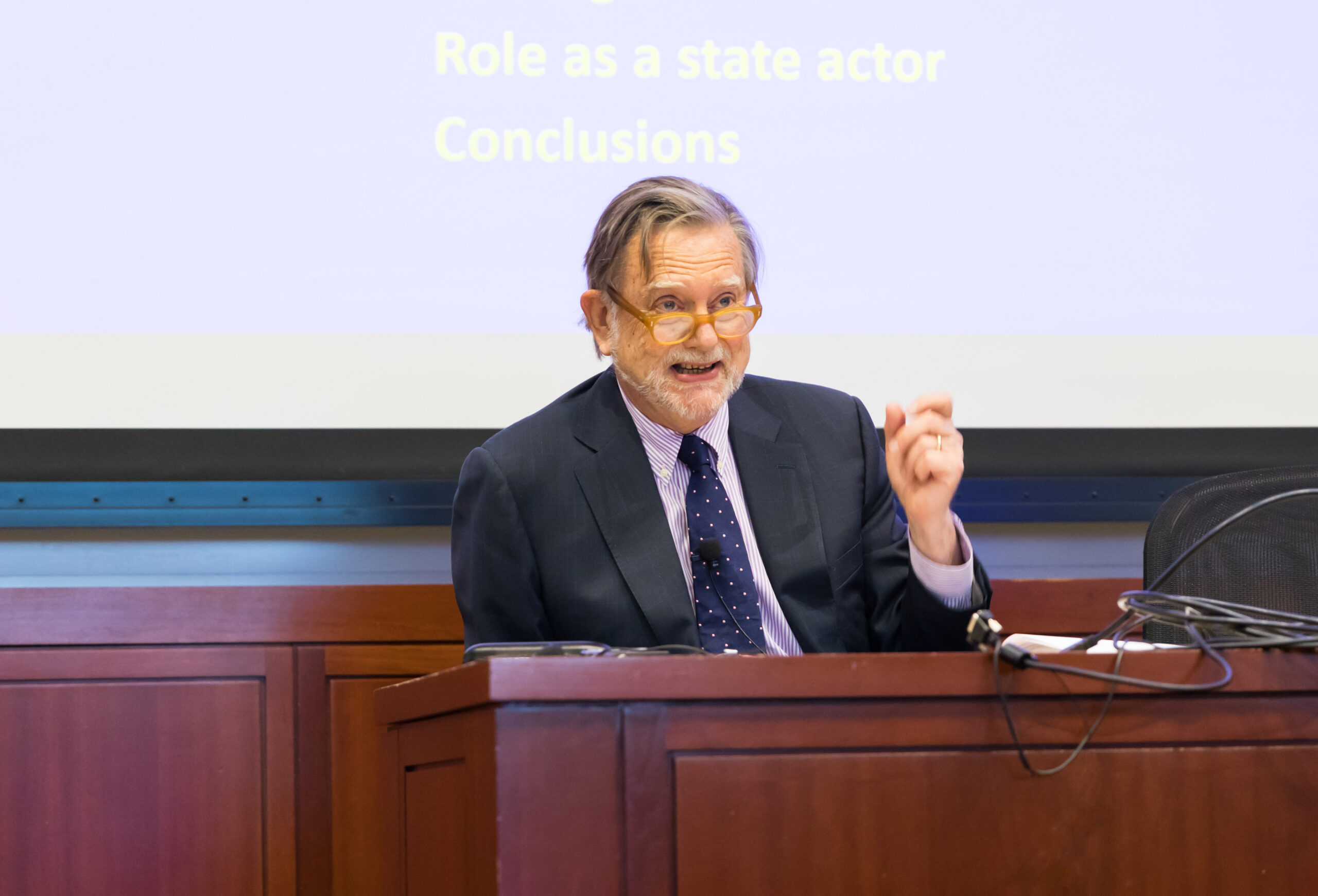For most Americans, Huawei is hardly a household name. The Chinese telecommunications equipment and consumer electronics manufacturer has had only a limited consumer footprint in the United States. That began to change, though, last year when the daughter of the company’s founder and its chief financial officer, Meng Wanzhou, stepped off a plane in Vancouver, British Columbia, and was immediately taken into custody by Canadian authorities at the behest of the United States. Her arrest for allegedly helping Huawei evade US sanctions on Iran, and the tit-for-tat detention of a number of Canadian citizens in China, has brought renewed attention on the company, its relationship with China’s military and intelligence agencies, and its ambitious goals to be a dominant player in the race to deploy 5G wireless technology around the world.
Paul Clifford, a Nonresident Senior Fellow at the Ash Center and author of The China Paradox: At the Front Line of Economic Transformation, helped shed light on Huawei’s growth strategy and addressed directly some of the security claims lodged at the company by senior Trump administration officials at a talk at the Ash Center earlier this spring. With the US State Department and the Federal Communications Commission labeling the Chinese telecoms giant a national security threat, Clifford argues that “there’s no concrete evidence that Huawei technology is being used by China to spy,” although the business strategist and historian readily concedes that “we have to have a high level of vigilance regarding security.”
Huawei’s start as a low-cost manufacturer of telecommunications switching equipment aimed at the domestic Chinese market in the 1980s to its emergence as one of the world’s dominant players in developing and deploying 5G technology is, according to Clifford, largely attributable to the vision and leadership of the company’s founder, Ren Zhengfei, a former People’s Liberation Army (PLA) technologist who, in the early 1980s, moved to Shenzhen, the freewheeling coastal city bordering Hong Kong that later developed into one of the world’s foremost manufacturing centers. With $5,000 in his pocket, Ren started Huawei in 1987, which began by importing equipment from Hong Kong and later started manufacturing telecom switches. Later, a decision to transition into the wireless infrastructure business helped transform Huawei into what Clifford terms a “world-class firm.”
Since its founding, the company has grown at breathtaking speed, and currently boasts 180,000 employees in more than 170 countries and regions. Its size dwarfs many of the established international players in the market, including Nokia and Ericsson as it closes in on the industry juggernaut Cisco. After dominating the world of routers and servers, Huawei is moving into cloud and data center services, where it is making large investments in the internet of things and artificial intelligence business lines, according to Clifford.
Its success and market-share growth has attracted scrutiny from regulators and national security officials concerned about the company’s links to China’s military and Communist Party leadership. “The party state does not dictate to Huawei day-to-day, but when the party state does require something, Huawei has no choice but to agree,” explains Clifford. Clifford concedes that though it is a privately held, as opposed to a state-owned enterprise, “Huawei is part of China Inc.” He argued that while most daily decisions are commercial, firms such as “Huawei, Alibaba, Tencent, are forced to constantly look over their shoulder and to a degree become subservient to the party state.”
The Trump administration, as well as a number of NATO defense and intelligence officials, have expressed deep concern over Huawei’s dominance in many segments of the ICT sector. In recent testimony before the US Senate, FCC Chairman Ajit Pai stated that he was concerned that companies such as Huawei “do indeed present a threat to the United States, either on their own or because of Chinese domestic law. For example, China’s national intelligence law explicitly requires any individual or entity subject to that law to comply with requests to intelligence services.”
Others have cast suspicion on Huawei’s link to the PLA through Ren’s former military service, which Clifford calls a red herring. He argues that the PLA maintains its own military cyber technologies and hardly needs to lean on companies such as Huawei to develop digital eavesdropping capabilities for it, though he notes “Huawei is expected to share its technology with the party state when required.”
As Huawei’s footprint has grown around the world, some key American players have stumbled. “Where is Lucent? It bet wrongly on CDMA wireless technology. Motorola, do you remember Motorola, king of the early mobile telephony,” asks Clifford. What’s troubling to Clifford is that the US is using concerns over security as an excuse to put the breaks on the growth of Chinese telecommunications companies. “Let us separate national security issues from the question of our response to China as a technological rival,” he suggests. Clifford’s concern is that if US regulators go down the path of linking security with competition, “It could lead to a technology war that manifests itself as a new technology iron curtain.”
The challenge that Huawei and others present to the US and its previous unassailable lead in technology, according to Clifford, is as much a psychological challenge as it as a business or technology challenge. “We should avoid a paranoid response that leads to conflict, and should respond in two simple ways: we should invest to compete and we should cooperate with China wherever prudent, and recognize we have complementary skills and approaches.” Whichever path the US and its allies take will have significant implications for the future of technology for households around the world, regardless of whether Huawei becomes as common a brand as Verizon or Apple.




